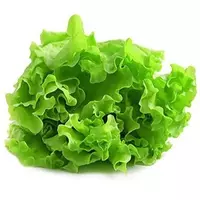Salad

It is not known which country should be considered the birthplace of lettuce, but it is currently cultivated almost everywhere. The process of growing it is quite simple, so there is a salad in almost every summer cottage and garden, you can grow it even on the windowsill and thus get the opportunity to enjoy fresh greens all year round.
In its more than 5, 000-year history, lettuce has come a long and difficult journey before rightfully taking its pride of place on a person's list of irreplaceable "green friends. " Initially, lettuce was grown only for the sake of oil extracted from seeds. The taste and nutritional qualities of lettuce leaves were not discussed until the Greeks and Romans appreciated the salad as a green, and not just as a source of oil.
There are a very large number of lettuce types (over 100). They differ strikingly in shape and in the color of the leaves - from light green to maroon. One thing unites them - they are all surprisingly tasty and healthy. With the proven well-known benefits of lettuce, it can only be used as an additive to various dishes, because it saturates weakly and does not give a feeling of satiety.
Benefits of lettuce
Lettuce is a treasure trove of essential vitamins and minerals. So, for example, the salad contains a significant amount of folic acid, which stimulates the normal functioning of the intestines and contributes to the elimination of unwanted cholesterol from the body. In addition, it is necessary to activate the hematopoietic process, to ensure the normal functioning of the nervous system, which is especially important for pregnant women and young children.
The salad is rich in vitamins A, B, E, PP, as well as ascorbic acid and carotene. An important useful property is that the salad contains a large amount of calcium and magnesium. Calcium is the main building material for bone tissue, tooth enamel, it helps to keep the composition of blood, as well as tissue fluids, in working order. Magnesium contributes to the normal activity of muscle fibers, the preservation of cell structure. The salad includes a unique substance lactucin, which has the ability to calm the central nervous system, reduce the deposition of salts in the body. Thanks to lettuce leaves, blood circulation is improved and metabolism is normalized.
Traditional medicine strongly recommends the use of green salad juice to improve hair growth and appearance. According to her advice, drinking salad juice before bed improves sleep, and in the morning and during the day - increases appetite. To get the most delicious and useful juice, it is recommended to choose bright green leaves, because it is they that contain the largest amount of chlorophyll and other essential nutrients necessary to maintain health.
Harm of lettuce
The only contraindication to the use of lettuce can be the individual intolerance of substances included in its composition. But such cases are quite rare, so the harm of lettuce is minimal, and the benefits are great and diverse.
lettuce 16 kCal
The energy value of lettuce (Ratio of proteins, fats, carbohydrates - ju):
Proteins: 1.5 g (~ 6 kCal)
Fats: 0.2 g (~ 2 kCal)
Carbohydrates: 2g (~ 8kCal)
Energy ratio (bj | y): 38% | 11% | 50%
 Español
Español Français
Français Português
Português Русский
Русский 简体中文
简体中文 繁體中文
繁體中文 日本語
日本語 한국어
한국어 العربية
العربية Türkçe
Türkçe Қазақ
Қазақ Deutsch
Deutsch Italiano
Italiano Українська
Українська
